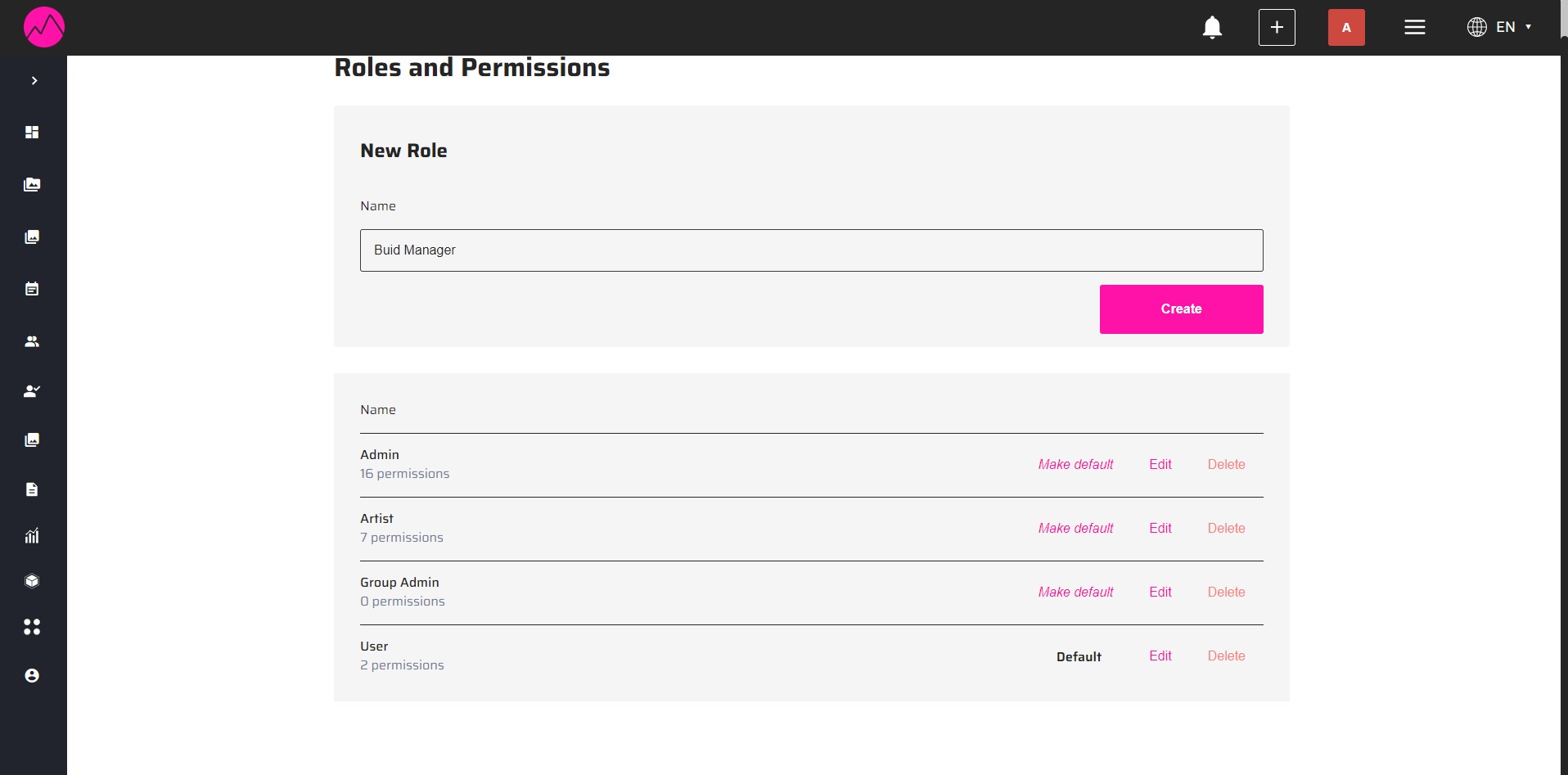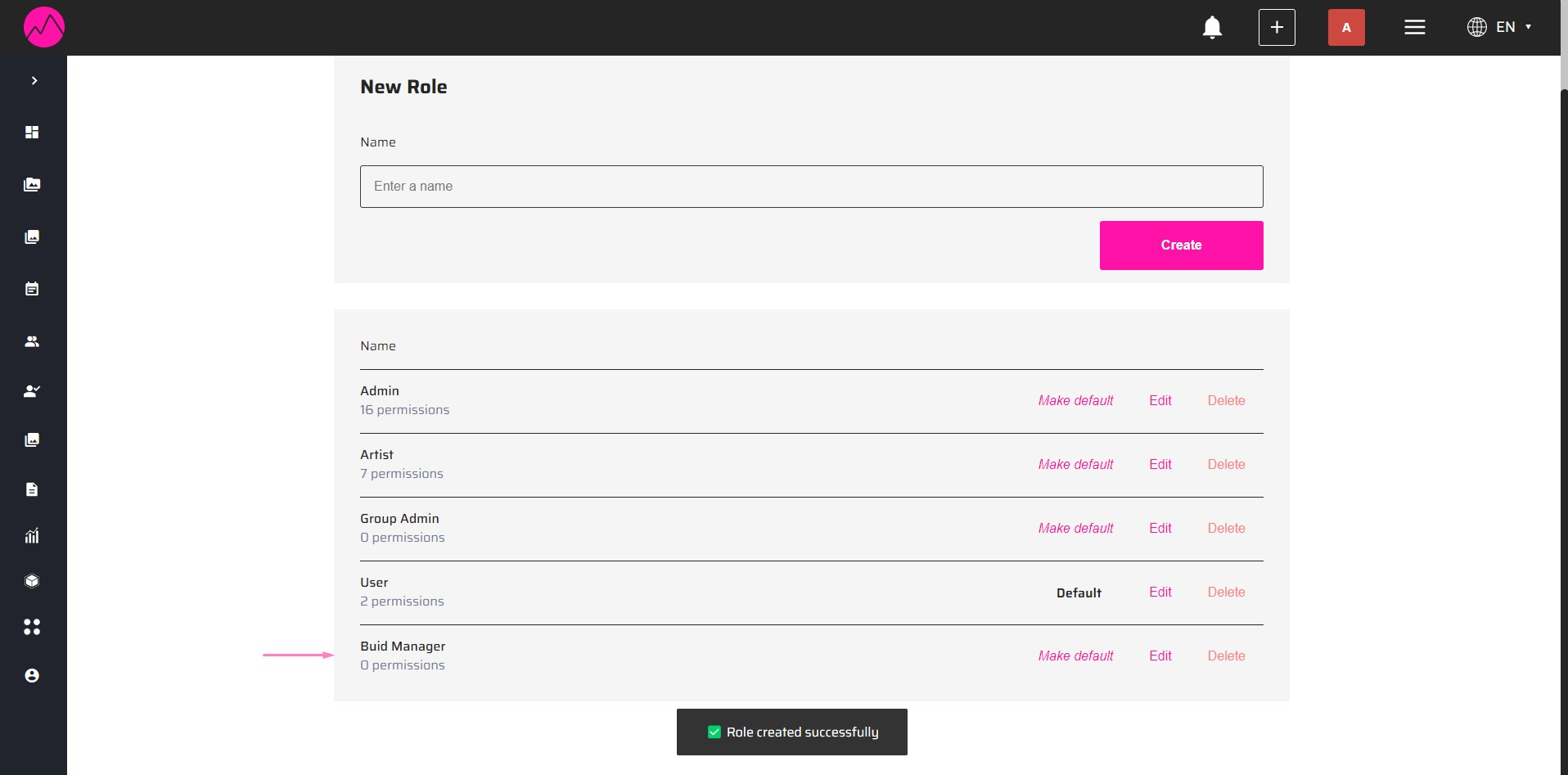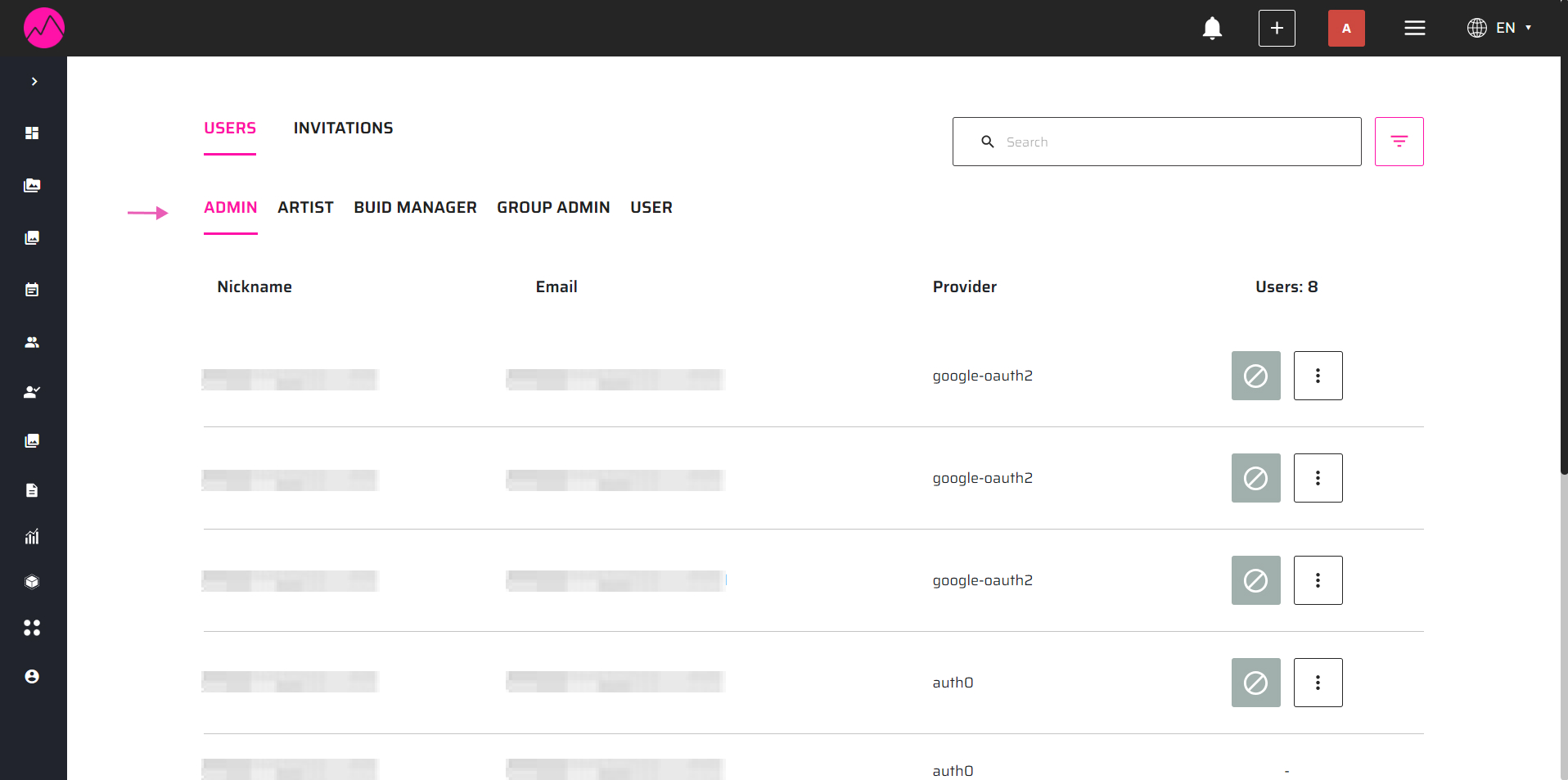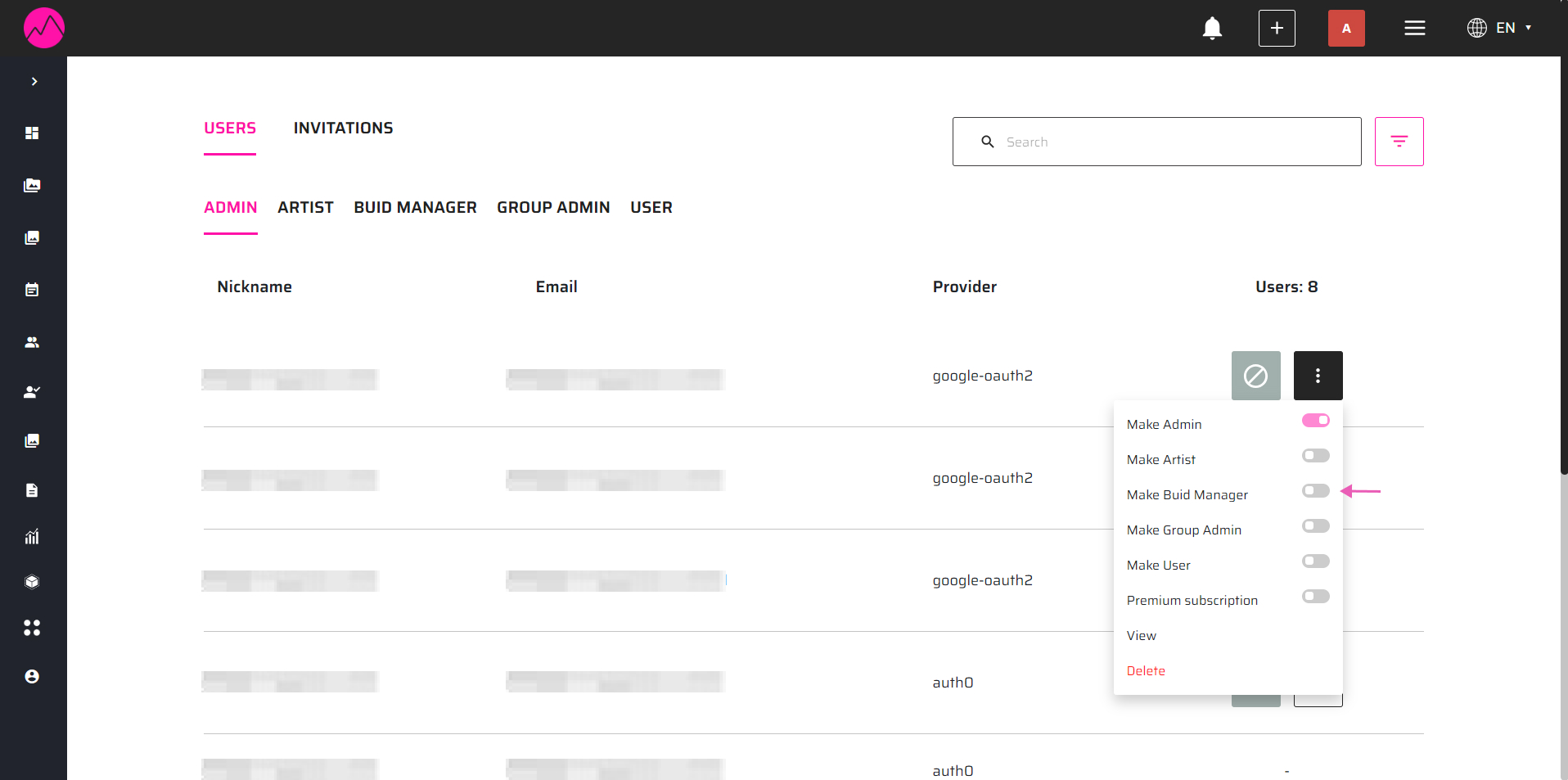Role Management
You can establish specific roles for your dashboard using the custom permissions provided by our platform.

Creating a Role
To create a role, simply enter its name in the first input field and click Create.

The role will initially have no permissions assigned. To add the desired permissions to this role, click the "Edit" button.

Editing Roles
When you click on "Edit role," a list of permissions will be displayed. You can assign any of the custom permissions available on our platform.

Analytics: This permission allows users to access and view the Analytics page in the sidebar, which displays various statistics and charts related to the application's performance and usage.
Delete-events: The delete-events permission allows a user to remove events from the dashboard. Depending on other permissions assigned to the role, it may enable the user to delete their own events (as in the case of artist permissions) or all events in the system. It also adds the event icon to the sidebar.
Manage-builds: The manage-builds permission enables the user to create, edit, delete, and publish builds on the dashboard, as well as create spaces for events in the Oculus App. This option is added to the sidebar as "Build Management."
Manage-scenes: The manage-scenes permission allows the user to assign private scenes in the dashboard and adds the "Scene Management" option to the sidebar.
Artist: The "artist" permission allows users to access and manage features and settings related to their artistic profile and portfolio. It displays the XR Studio tab in the dashboard and provides access to "My Work" and profile settings for artists.
View-all-events: The view-all-events permission permits the user to view all events on the dashboard, regardless of their creator or when they occurred.
Create-events: The create-events permission allows a user to create or edit new events on the dashboard.
Manage-meetings: This permission allows the user to view, edit, and delete owned meetings. Without this permission, the user cannot access the dashboard page.
Manage-landings: The "manage-landings" permission lets the user - create, edit, delete, and publish landing pages on the dashboard.
Manage-communications: The "manage-communications" permission enables the user to access and respond to various messages from app users, such as feedback, bug reports, inquiries, etc. This includes receiving contact emails, notifications of registered users' emails, emails with bug reports, and more.
Metaverse-admin: This permission grants the user access to modify the settings and features of the Metaverse platform.
Publish-events: The publish-events permission allows a user to publish events to the dashboard service, which can be used to display real-time data or notifications.
Create-meetings: The create-meetings permission allows the user to manage meetings on the dashboard, including creating new ones, editing existing ones, deleting unwanted ones, and inviting other participants.
Manage-users: The manage-users permission enables the user to invite, edit, delete, and view other users on the dashboard. It shows the user management option in the sidebar and the group-management section.
Manage-roles: The "manage-roles" permission allows the user to perform CRUD operations on roles in the dashboard.
Metaverse-editor: This permission grants users access to the XR and AR Editor, adding the "XR Editor" option to the "+" dropdown in the dashboard.
Note: Some permissions depend on others to function. For example, to see groups in the scene management dropdown, user-management permissions are required. Similarly, create and publish event permissions are necessary for users to be able to delete events.
Assigning roles to users
Once you create a role, it will appear alongside other permissions in the user management section and the dropdown menu.

To grant a user a specific permission, simply search for the user and select the desired role from the dropdown menu.

You can remove this permission at any time. If you need to invite a user who is not in the platform with a particular role, please follow the invitation instructions in the user management section.